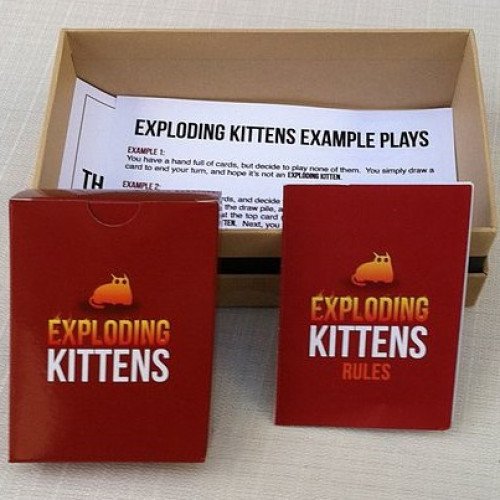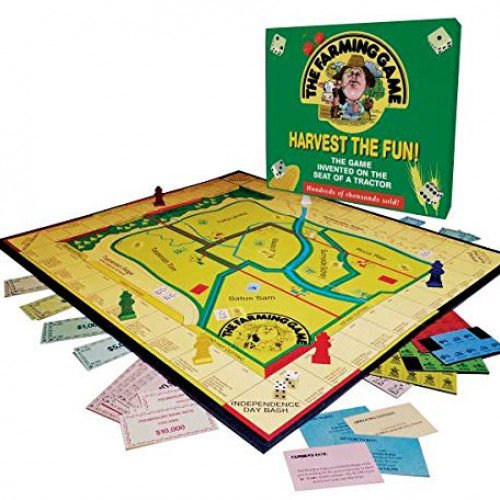"EXPLODING KITTENS" vs "THE FARMING GAME"

EXPLODING KITTENS
Exploding Kittens is a card game designed by Elan Lee, Matthew Inman from the comics site The Oatmeal, and Shane Small. Originally proposed as a Kickstarter project seeking US$10,000 in crowdfunding, it exceeded the goal in eight minutes and on January 27, 2015, seven days after opening, it passed 103,000 backers setting the record for the most backers in Kickstarter history. At completion on February 19, 2015, it had US$8,782,571 in pledges by 219,382 backers. The campaign ended as the fourth most funded campaign on the crowdfunding site. The first play test of Exploding Kittens was recorded on YouTube by Smosh Games, who had the first deck. The backers started receiving delivery in late July 2015; all backers received the game by September 2015. Exploding Kittens is described as a “strategic card game about cats and destruction”. All cards are put into a deck, save for the Defuse and Exploding Kitten cards. The deck is shuffled and each player draws 7 cards and takes a Defuse card. The Exploding Kitten cards are then shuffled back into the deck so that the number of Exploding Kitten cards in the deck is one less than the number of players. The remaining Defuse cards are then also put back in the deck. A turn order is decided upon. Each player may then play as many cards from their hand as they like on their turn (including none) before drawing a card. Players are not to tell any other player what cards are in their hand. Played cards are put into a discard pile. The first expansion pack, Imploding Kittens, increases the number of players from 5 to 6 and requires a copy of Exploding Kittens to play. There are 20 new cards. The second expansion pack, Streaking Kittens, requires a copy of Exploding Kittens to play. There are 15 new cards. The third expansion pack, Barking Kittens, requires a copy of Exploding Kittens to play. There are 20 new cards.
Statistics for this Xoptio

THE FARMING GAME
The Farming Game is a board game simulating the economics of a small farm. Published in 1979, it was designed by George Rohrbacher, a rancher in Washington state. The Farming Game painfully reflects the real-life difficulties of running a farm. Also, the names and places in the game are the names of families farming for generations in Yakima Valley and other parts of Central Washington. When Rohrbacher invented the game, it was a desperate time for his failing farm and small family, which is reflected in the difficulty of the game, and the multitude of points taken into consideration in farming that are often left up to chance. It is considered a board game which has educational value. The game sold more than 150,000 copies by 1985, and saved Rohrbacher's farm. By 1995, the estimate of copies sold was 350,000. The game's objective is to raise money by harvesting crops and selling livestock, including hay, fruit, grain, and cattle. This is done by moving around the board using one die. Each trip around the board represents a year of farming, and players can increase their chances of earning more money by planting more crops or raising more livestock, which can be purchased by exercising the option given from an Option to Buy (O.T.B.) card a player has drawn during the course of the game. Elements of the game are intended to reflect aspects of real-life farming. For example, players sometimes encounter Farmer's Fate cards that are either good or bad, similar to the Chance cards found in Monopoly. One such card allows a player to collect $2,000 from every player who has no harvester, if you own one. Another card informs that due to the IRS garnishing your income, you may not collect on any of your harvests for the rest of the year. These cards are intended to reflect the element of chance or luck that is involved in farming, which is the aim of the game.